Macchi C.200
| C.200 Saetta | |
|---|---|
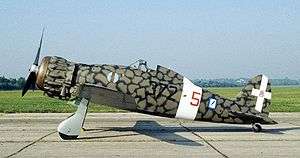 | |
| The NMUSAF's preserved C.200 in the markings of 372° Sq., Regia Aeronautica | |
| Role | Fighter |
| Manufacturer | Aeronautica Macchi |
| First flight | 24 December 1937 |
| Introduction | 1939 |
| Retired | 1947 |
| Primary user | Regia Aeronautica |
| Number built | 1,151 + 2 Prototypes[1] |
|
| |
The Macchi C.200 Saetta (Italian: Arrow), or MC.200, was a World War II fighter aircraft built by Aeronautica Macchi in Italy, and used in various forms throughout the Regia Aeronautica (Italian Air Force). The MC.200 had excellent maneuverability and general flying characteristics left little to be desired.[2] Stability in a high-speed dive was exceptional,[3] but it was underpowered and underarmed in comparison to its contemporaries.[4]
From the time Italy entered war on 10 June 1940, until the armistice of 8 September 1943, the C. 200 flew more operational sorties than any Italian aircraft. The Saetta ranged over Greece, North Africa, Yugoslavia, France, across the Mediterranean and the Soviet Union (where it obtained an excellent kill to loss ratio of 88 to 15).[5][6] Its very strong all-metal construction and air-cooled engine made the aircraft ideal for ground attack and several units flew it as a fighter-bomber. Over 1,000 were built by the time the war ended.[7]
Design and development
Following the end of Italy's campaigns in East Africa, a program was started to completely re-equip the Regia Aeronautica with a new interceptor aircraft of modern design. The 10 February 1936 specifications [8] called for an aircraft powered by a single radial engine, with a top speed of 500 km/h, climb rate at 6,000 meters of 5 minutes, with a flight endurance of two hours, and armed with a single (later increased to two) 12.7 mm (0.5 in) machine gun.[9]
Macchi's lead designer was Mario Castoldi, the creator of several racing aircraft which competed for the Schneider Trophy, including the M.39, which won the competition in 1926. He also designed the M.C. 72. In designing a modern fighter, Castoldi proposed a modern all-metal cantilever low-wing monoplane, with retractable landing gear, and an enclosed cockpit. The fuselage was of semi-monocoque construction, with self-sealing fuel tanks under the pilot's seat, and in the centre section of the wing. The distinctive "hump" elevated the cockpit to provide the pilot with an unobstructed view over the engine. The wing had an advanced system whereby the hydraulically actuated flaps were interconnected with the ailerons, so that when the flaps were lowered the ailerons drooped as well.
Power was provided by the 650 kW (870 hp) Fiat A.74 radial engine, although Castoldi preferred inline engines, and had used them in all of his previous designs. With "direttiva" (Air Ministry Specification) of 1932, Italian industrial leaders had been instructed to concentrate solely on radial engines for fighters, due to their better reliability.[10] The A.74 was a re-design of the American Pratt & Whitney R-1830 SC-4 Twin Wasp made by engineers Tranquillo Zerbi and Antonio Fessia and was the only Italian engine that could provide a reliability similar to Allied products.[11]
The licence-built A.74 engine could be problematic. In late spring 1941, 4° Stormo's Macchi C.200s then based in Sicily, had all the A.74s produced by the Reggiane factory replaced because they were defective units. The elite unit had to abort many missions against Malta due to engine problems.[12] Although the Macchi C.200 was considered underpowered, the air-cooled radial engine provided some pilot protection during strafing missions. Consequently, the C.200 was often used as a cacciabombardiere (fighter-bomber).[13] Moreover, it was maneuverable and had a sturdy all-metal construction. Its armament of two 12.7 mm (.5 in) machine guns was not sufficient, but the Saetta could compete with contemporary Allied fighters.
The first prototype (MM.336) C.200 flew on 24 December 1937, in Lonate Pozzolo, Varese, with Macchi Chief Test Pilot Giuseppe Burei at the controls. It was followed by the second prototype early the next year. During testing, the aircraft attained 805 km/h (500 mph) in a dive, although it could muster only 500 km/h (310 mph) in level flight due to a lack of engine power. Nevertheless, this was better than the performance of the competing Fiat G.50, Reggiane Re.2000, A.U.T. 18, IMAM Ro.51, and Caproni-Vizzola F.5. In 1938 the C.200 won the tender "Caccia I" (fighter 1st) of the Regia Aeronautica, even if after tests at Guidonia airport, on 11 June 1938, Maggiore Ugo Borgogno had warned that when turning at 90° and the pilot tried to make a tighter turn, the aircraft became extremely difficult to control, tending to turn upside down, mostly to the right and entering into a violent flat spin.[14] Nevertheless, an initial order for 99 was placed to Macchi factory. The G.50 (which in same flight tests at Guidonia airport out-turned the Macchi [14]) was also placed in limited production, because it could be brought into service earlier. Production started in June 1939.
Like other of the early Italian monoplanes, the C.200 suffered from a dangerous tendency to go into a spin.[15] Early production C.200 aircraft showed autorotation problems similar to those found in the Fiat G.50, IMAM Ro.51, and the AUT 18. At the beginning of 1940 two deadly accidents occurred due to autorotation. Deliveries and production stopped, and the Regia Aeronautica thought of abandoning use of the type, as the skill involved in flying it was beyond that of the average pilot.[16] The problem was the new profile of the wing. Castoldi soon tested a new profile, but a solution to the autorotation problem was found by Sergio Stefanutti, chief designer of SAI Ambrosini in Passignano sul Trasimeno, based on studies by Willy Messerschmitt and the NACA. He redesigned the wing section according to variable (instead of constant) profile[17] by just covering parts of the wings with plywood.[14]
The new wing entered production in 1939/1940 at SAI Ambrosini and became standard on the aircraft manufactured by Aermacchi and Breda, a licensed manufacturer.[18] After the modified wings of the Saetta were introduced, the C.200 proved to be, for a time, the best Italian fighter. To save weight, the first production C.200 series did not have armour fitted to protect the pilots. Armour plating was incorporated when the units were going to replace the Saettas with the new Macchi C.202 Folgore and often in only a limited number of aircraft. After the armour was fitted, the aircraft could become difficult to balance, and during aerobatic manoeuvres could enter an extremely difficult to control flat spin, forcing the pilot to bail out. On 22 July 1941, Leonardo Ferrulli, one of the top-scoring Regia Aeronautica pilots, encountered the problem and was forced to bail out over Sicily.[19]
But the Macchi had an outstanding field of view, since the cockpit was partially open and placed on the hump of the fuselage. Moreover, the C.200 was a sturdy fighter. Thanks to its ultimate load factor of 15.1, it could dive as fast as 500 mp.h. (True Air Speed). [20] Its greatest weakness was the light armament of two 12.7 mm (.5 in) Breda-SAFAT machine guns.[21] Moreover, the radio was not fitted as standard, while its flight characteristics, even if better than the G.50, were not easily mastered by the average Italian pilot, even after the new wings were adopted.
At the beginning of 1940, Denmark was set to place an order for 12 C.200s to replace its aging Hawker Nimrod fighters, but the deal fell through when Germany invaded Denmark.[22]
Production
The most serious handicap was the low production rate of the type at over 22,000 hours in production time due to antiquated construction technology.[23] A total of 1,153 Saettas were eventually produced, but almost all were gone by the time of the armistice between Italy and Allied armed forces in September 1943.
In an attempt to improve performance, a C.201 prototype was created with a 750 kW (1,000 hp) Fiat A.76 engine, but this was abandoned in favour of the Daimler-Benz DB 601-powered C.202. The Saetta was to have been replaced outright by the C.202 after only one year in production, but the C.200's service life was extended because Alfa Romeo could not produce enough of the RA.1000 (license-built DB 601) engines, and more C.200s were built using C.202 parts while waiting for production to increase.
Operational history
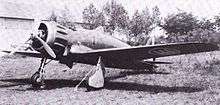
In August 1939 about 30 C.200s, by then nicknamed Saetta ("Arrow"), were delivered to 10° Gruppo of 4° Stormo, stationed in North Africa. However, pilots of this elite unit of the Regia Aeronautica opposed the adoption of the C.200, preferring the more manouvrable Fiat CR.42. The Macchis were then transferred to 6° Gruppo of 1° Stormo in Sicily, who were enthusiastic supporters of the new fighter, and Gruppo 152° of 54° Stormo in Vergiate. When Italy entered the war on 10 June 1940, 144 C.200s were operational, half of which were serviceable.[14] Although the first 240 aircraft had fully enclosed cockpits, the subsequent variants were given open cockpits at the request of the Italian pilots.[21] When it entered service, the Supermarine Spitfire was the only Allied fighter that it faced which could outclimb the Saetta.[7]
The first C.200s to make their combat debut were those of the 6° Gruppo Autonomo C.T. led by Tenente Colonnello (Wing Commander) Armando Francois. This squadron was based at the Sicilian airport of Catania Fontanarossa. A Saetta from this unit was the first C.200 to be lost in combat when on 23 June 1940 14 C.200s (eight from 88a Squadriglia, five from 79a Squadriglia and one from 81a Squadriglia) that were escorting 10 Savoia-Marchetti SM.79s from 11° Stormo were intercepted by two Gloster Gladiators. Gladiator No.5519, piloted by Flt Lt George Burges, jumped the bombers but was in turn attacked by a C.200 flown by Sergente Maggiore Lamberto Molinelli of 71a Squadriglia over the sea off Sliema. The Macchi overshot four or five times the more agile Gladiator which eventually shot down the Saetta.[24]
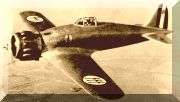
Only on 1 November were the C.200s credited with their first kill. A Sunderland on a reconnaissance mission was sighted and attacked just outside Augusta by a flight of Saettas on patrol. [25] With the arrival towards the end of December 1940 of X Fliegerkorps in Sicily, the C.200s were assigned escort duty for I/StG.1 and II/StG.2 Ju 87 bombers attacking Malta, as the Stukas did not have adequate fighter cover until the arrival of 7./JG26's Bf 109s.[26]
On 6 February 1941, the 4° Stormo received C.200s from 54° Stormo. With the autorotation problems solved, the Macchis were regarded as "very good machines, fast, manoeuvrable and strong" by Italian pilots.[27] After intense training, on 1 April 1941, the 10° Gruppo (4° Stormo) moved to Ronchi dei Legionari airport and started active service.[28] The C.200 subsequently saw action over Greece, Yugoslavia and the Balkans, frequently engaged in dogfights with British Gladiators and Hurricanes on the Balkans.[14] In combat with the less manoueverable Hurricane the C.200 proved effective, with outstanding dogfight performance and no vices.[29]
Yugoslavia
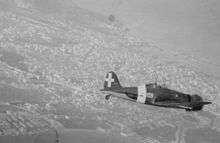
C.200s from 4° Stormo took part in operations against Yugoslavia right from the start of hostilities. On the dawn of 6 April 1941, four C.200s from 73a Squadriglia flew over Pola harbour and attacked an oil tanker, setting it on fire. The 4° Stormo flew its last mission against Yugoslavia on 14 April: on that day, 20 C.200s from 10° Gruppo flew up to 100 km south of Karlovac without meeting any enemy aircraft. Operations ended on 17 April. During those 11 days, the 4° Stormo had not lost a single C.200. Its pilots destroyed 20 seaplanes and flying boats, damaging 10 more. In total, they had set on fire an oil tanker, a fuel truck, several other vehicles and destroyed port installations.[30]
North Africa

Fitted with dust filters and designated C.200AS, Saettas saw extensive use in North Africa. The Macchi's introduction was not well received by pilots when in 1940, the first C.200 unit, 4° Stormo replaced the type with the C.R.42. The first combat missions were flown as escorts for Savoia-Marchetti SM.79 bombers attacking Malta in June 1940, where one C.200 was claimed by a Gladiator. On 11 June 1940, second day of war for Italy, the C.200s of 79a Squadriglia encountered one of the Sea Gladiators which had been scrambled from Hal Far, Malta. Officer W.J. Wood claimed Tenente Giuseppe Pesola had been shot down, but the Italian pilot came back unscathed to his base.[31]
The Saetta with its sturdy construction, and its agility permitted skilled pilots to effectively fight against more modern designs like the British Hawker Hurricane and the American Curtiss P-40. [21]
While the Hurricane was faster at sea level (450 km/h/280 mph vs the C.200's 430 km/h/270 mph), the Saetta could reach more than 500 km/h (310 mph) at 4,500 m (14,800 ft), although speed dropped off at altitude: 490 km/h (300 mph) at 6,000 m (19,700 ft) and 350 km/h (220 mph) at 7,000 m (23,000 ft) with a maximum ceiling of 8,800 m (29,000 ft). Comparative speeds of the Hurricane Mk I was 505 km/h (314 mph) at 5,000 m (16,400 ft) and 528 km/h (328 mph) at 6,000 m (19,700 ft).[32] Over 5,000 m (16,400 ft) and at very low levels, only the huge Vokes (anti-sand) air filter fitted to the "tropical" variants slowed the Hurricane Mk II to Macchi levels. Although the Macchi C.200 was more agile than the Hurricane, it was less armed than the British fighter. On 8 December 1941, Macchi C.200s of the 153° Gruppo engaged Hurricanes from 94 Squadron. A violent dogfight developed with the commanding officer, Squadron Leader Linnard attempting to intercept a Macchi attacking a Hurricane. Both aircraft were making steep turns and losing height, but Linnard was too late and the Macchi, turning inside the Hurricane, had already hit the cockpit area. The stricken aircraft turned over at low level and dived into the ground, bursting into flames. Its pilot, the New Zealand born RAF "ace" (six enemy aircraft destroyed and many more probably destroyed) Flight Lieutenant Owen Vincent Tracey was killed.[14][33]
In addition, C.200s operated as fighter-bombers against land and naval objectives, and in September 1942 sank the British destroyers Zulu and Sikh near Tobruk during Operation Agreement.
Eastern Front
In August 1941, the Italian air force command sent one air corps, formed out of the 22º Gruppo Autonomo Caccia Terrestre with four squadrons and 51 C.200s to the Eastern Front with the Italian Expeditionary Corps in Russia.[34] Together with C.202s, they claimed an 88 to 15 victory/loss ratio.[21] The first Macchis arrived in Tudora, near Odessa, on 13 August 1941, commanded by Maggiore Giovanni Borzoni and deployed in 359a, 362a, 369a and 371a Flights (Squadriglias). C.200s carried out their first operations from Krivoi Rog, on 27 August 1941, achieving eight aerial victories over Soviet bombers and fighters.[35] For a short time the 22° Gruppo was subordinated to Luftwaffe V.Fliegerkorps.[36] Subsequently, they took part in the September offensive on the Dnjepr and as the offensive went on, they operated sporadically from airstrips in Zaporozhye, Stalino, Borvenkovo, Voroshilovgrad, Makiivka, Oblivskaja, Millerovo and their easternmost location, Kantemirovka, moving to Zaporozhye late in October 1941. In December 371a Squadriglia was transferred to Stalino but replaced two days later by 359a with 11 C.200s. On 25 December, the C.200s flew low-level attacks against Soviet troops that had encircled the Black Shirt Legion Tagliamento, at Novo Orlowka. On 28 December, pilots of 359a claimed nine Soviet aircraft, including six I-16 fighters, in the Timofeyevka and Polskaya area, without loss.[36]
During February 1942, the C.200 was employed in attacking Soviet airfields at Krasnyi Liman, Luskotova and Leninski Bomdardir. On 4 May 1942, the 22º Gruppo Autonomo Caccia Terrestre, which had reached its operational limit, was replaced by the newly formed 21º Gruppo Autonomo Caccia Terrestre, composed of 356ma, 382ma, 361ma and 386ma Squadriglia. This unit, commanded by Maggiore Ettore Foschini, brought new C.202s and 18 new C.200 fighters. During the Second Battle of Kharkov (12–30 May) the Italians flew escort for the German bombers and reconnaissance aircraft.[37] In May the aircraft's pilots received praise from the commander of the German 17th Army, mostly for their daring and effective attacks in the Slavyansk area.[38] During the German advance in summer 1942 the 21° Gruppo Autonomo C.T. transferred to Makeevka airfield, and then to Voroshilovgrad and Oblivskaya.
Increasingly the aircraft were tasked to escort German aircraft. On 24 July 1942, the unit was shifted to Tatsinskaya Airfield, with 24 Saettas. Its main task was to provide escort for Stukas in the Don Bend area, where there were few German fighters available. Hauptmann Friedrich Lang, Staffelkäpitan of 1./StG 2 reported the Italian escort as "most disappointing." The Saettas proved unable to protect the Stukas from Soviet fighters.[39] On 25 and 26 July 1942, five C.200s were lost in aerial combat.[40] After only three days of action from Tatsinskaya, one third of the Italian fighters had been shot down.[39] The following winter the Soviet counter-offensive resulted in a retreat of the Axis forces. By early-December, only 32 Saettas were still operating, along with 11 C.202s.
Losses grew in the face of a more aggressive enemy flying newer aircraft. One of their last missions was to protect Junkers Ju 52 ambulance planes filled with wounded veterans from swarms of attacking Soviet interceptors. The last major action was on 17 January 1943: 25 C.200s strafed enemy troops in the Millerovo area. The aviation of the ARMIR was withdrawn on 18 January, bringing 30 C.200 and nine C.202 fighters back to Italy and leaving 15 unserviceable aircraft behind. A total of 66 Italian aircraft had been lost on Eastern Front - against, according to official figures, 88 victories claimed during 17 months of action in that theatre.[41]
The summary of the Italian expeditionary force operations included: 2,557 offensive flights (of which 511with bombs drops), 1,310 strafing attacks, 1,938 escort missions, with the loss of 15 C.200s. The top scoring unit was 362a Squadriglia commanded by Capitano Germano La Ferla, who claimed 30 Soviet aircraft shot down and 13 destroyed on the ground.[42]
After the armistice
Twenty-three Saettas were transferred to Allied airfields in southern Italy, and flown for a short time by pilots of the Italian Co-Belligerent Air Force. A small number also flew for the pro-German National Republican Air Force based in northern Italy.
Variants
The Saetta underwent very few modifications during its service life. Aside from the switch to an open canopy, later aircraft were fitted with an upgraded radio and an armoured seat. Some late-production Saettas were built with the MC.202 Serie VII wing, thus adding two 7.7 mm (.303 in) Breda-SAFAT machine guns to the armament. The four (including two proposed) C.200 derivatives were:
- M.C. 200 (prototypes)
- Two prototypes fitted with the 623 kW (840 hp) Fiat a.74 RC 38 radial piston engine.
- M.C. 200
- Single-seat interceptor fighter, fighter-bomber aircraft. Production version.
- M.C.200bis
- Breda-proposed modification with a Piaggio P.XIX R.C.45 engine producing 880 kW (1,180 hp) at 4,500 m (14,800 ft). Converted from an early production C.200: first flight 11 April 1942 from Milano-Bresso flown by Luigi Acerbi. The aircraft was then fitted with a larger propeller and a revised engine cowling. Top speed in trials was 535 km/h (332 mph). It did not enter production as the C.200 had been replaced by more advanced designs.
- M.C.200AS
- Adapted version to North African Campaign.
- M.C.200CB
- Fighter-bomber version with 320 kg (710 lb) of bombs or two external fuel tanks (fighter escort).
- M.C.201
- As an answer to a 5 January 1938 request by the Regia Aeronautica for a C.200 replacement, Aermacchi proposed the C.201, with a revised fuselage, an engine Isotta-Fraschini Astro A.140RC.40 (license variant of the French Gnome-et-Rhone GR.14Krs Mistral Masjor) with 870CV. But later the choice was for the Fiat A.76 R.C.40 engine with 750 kW (1,000 hp). Two prototypes were ordered. The first flew on 10 August 1940, with the less powerful engine A.74.[43] Although Macchi estimated a top speed of 550 km/h (340 mph), the prototype was cancelled after Fiat abandoned the troublesome A.76 engine.
Operators
- Luftwaffe operated some captured aircraft.
- Italian Air Force operated some aircraft as trainer until 1947[44]
Specifications (Macchi C.200 early series)
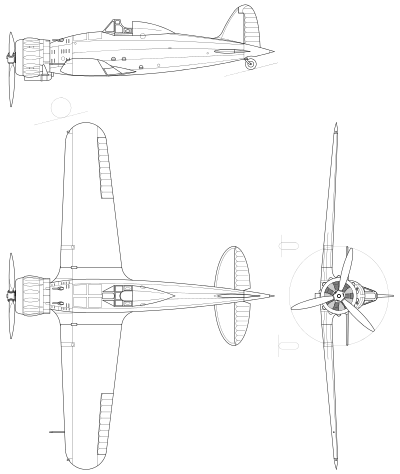
General characteristics
- Crew: 1
- Length: 8.25 m (27 ft 1 in)
- Wingspan: 10.58 m (34 ft 8 in)
- Height: 3.05 m (10 ft 0 in)
- Wing area: 16.82 m² (181.00 ft²)
- Empty weight: 1,964 kg (4,330 lb)
- Loaded weight: 2,200 kg (4,840 lb)
- Max. takeoff weight: 2,395 kg (5,280 lb)
- Powerplant: 1 × Fiat A.74 R.C.38 14-cylinder air-cooled radial engine, 650 kW (870 hp) at 2,520 rpm for takeoff
Performance
- Maximum speed: 504 km/h (313 mph) at 4,500 m (14,765 ft)
- Range: 570 km (354 mi)
- Service ceiling: 8,900 m (29,200 ft)
- Rate of climb: 15.3 m/s (3,030 ft/min)
- Wing loading: 131.7 kg/m² (26.9 lb/ft²)
- Power/mass: 0.286 kW/kg (0.176 hp/lb)
Armament
- 2× 12.7 mm (.5 in) Breda-SAFAT machine guns, 370 rpg
- Some aircraft were field-modified to carry up to 8× 15 kg (33 lb) or 2× 50, 100, or 150 kg (110, 220, or 330 lb) bombs under the wings
See also
- Related development
- Aircraft of comparable role, configuration and era
- Curtiss P-36
- Fiat G.50
- Grumman F4F Wildcat
- IAR 80
- Mitsubishi A6M
- Nakajima Ki-43
- Reggiane Re.2000
- Seversky P-35
- Related lists
References
- Notes
- ↑ Macchi C.200 Saetta
- ↑ Munson 1960, p. 34.
- ↑ Spick 1997, p. 116.
- ↑ Ethell 1995, p. 68.
- ↑ De Marchi and Tonizzo 1994, p. 10.
- ↑ Ethell 1995, p. 70.
- 1 2 Ethell 1995, p. 69.
- ↑ Sgarlato 2008, p. 4.
- ↑ Sgarlato 2008, p. 5.
- ↑ Brindley 1973, p. 234.
- ↑ Sgarlato 2008, p. 14.
- ↑ Duma 2007, pp. 200–201.
- ↑ Ethell 1996, pp. 68–69.
- 1 2 3 4 5 6 de Marchi 1994
- ↑ Sgarlato 2008, p. 6.
- ↑ de Marchi 1994. Quote: "Sopraggiungono due incidenti mortali per autorotazione che fanno sospendere voli e consegne, si pensa di abbandonare la macchina classificata non pilotabile dalla media dei piloti" (Two fatal accidents occurred due to autorotation that caused suspension of flights and deliveries, prompting consideration of abandoning the use of the aircraft, as it was considered "unflyable" by the average pilot.)
- ↑ Sgarlato 2008, pp. 7–8.
- ↑ Sgarlato 2008, p. 8.
- ↑ Duma 2007, p. 201.
- ↑ Palermo 2014, p. 236.
- 1 2 3 4 5 Cattaneo 1968
- ↑ History of Danish naval aviation on navalhistory.dk; retrieved 2 August 2014
- ↑ Marcon May 2000, pp. 28–38.
- ↑ Cull and Galea 2008, pp. 46–47.
- ↑ Caruana 1996, p. 166.
- ↑ Caruana 1999, p. 169.
- ↑ Duma 2007, p. 188.
- ↑ Duma 2007, p. 190.
- ↑ Gunston 1988, p. 255.
- ↑ Duma 2007, pp. 190–193.
- ↑ Malizia 2006, p. 28.
- ↑ Lembo 2000, p. 26.
- ↑ "O.V. Tracey." nzfpm.co.nz. Retrieved: 5 July 2010.
- ↑ Neulen 2000, p. 60.
- ↑ Neulen 2000, pp. 60–62.
- 1 2 Neulen 2000, p. 62.
- ↑ Neulen 2000, p. 63.
- ↑ Neulen 2000, pp. 63-64.
- 1 2 Bergström-Dikov-Antipov- 2006, p. 57.
- ↑ Neulen 2000, p. 64.
- ↑ Bergström 2007, p. 122.
- ↑ de Marchi 1994, p. 8.
- ↑ Sgarlato 2008, p. 19.
- ↑ Official website Aeronautica Militare
- ↑ Green and Swanborough 2001
- Bibliography
- Bergström, Christer. Stalingrad – The Air Battle: 1942 through January 1943. Hinckley UK: Midland, 2007. ISBN 978-1-85780-276-4.
- Bergström, Christer – Andrey Dikov – Vlad Antipov Black Cross Red Star – Air War over the Eastern Front Volume 3 – Everything for Stalingrad. Hamilton MA, Eagle Editions, 2006. ISBN 0-9761034-4-3.
- Bignozzi, Giorgio. Aerei d'Italia (Italian). Milan: Milano Edizioni E.C.A., 2000.
- Brindley, John F. "Caproni Reggiane Re 2001 Falco II, Re 2002 Ariete & Re 2005 Sagittario." Aircraft in Profile Vol. 13. Berkshire, UK: Profile Publications, 1973. ISBN 0-85383-022-3.
- Caruana, Richard J. Victory in the Air. Malta: Modelaid International Publications, 1999. ISBN 1-871767-12-1.
- Cattaneo, Gianni. Aer. Macchi C.200 (Ali d’Italia n°8) (in Italian/English). Torino, Italy: La Bancarella Aeronautica, 1997 (reprinted 2000).
- Cattaneo, Gianni. The Macchi MC.200 (Aircraft in Profile number 64). London: Profile Publications, 1966. No ISBN.
- Cull, Brian and Frederick Galea. Gladiators over Malta: The Story of Faith, Hope and Charity. Malta: Wise Owl Publication, 2008. ISBN 978-99932-92-78-4.
- De Marchi, Italo and Pietro Tonizzo. Macchi MC. 200 / FIAT CR. 32 (Italian). Modena, Italy: Edizioni Stem Mucchi, 1994.
- Di Terlizzi, Maurizio. Macchi MC 200 Saetta, pt. 1 (Aviolibri Special 5) (in Italian/English). Rome: IBN Editore, 2001.
- Di Terlizzi, Maurizio. Macchi MC 200 Saetta, pt. 2 (Aviolibri Special 9) (in Italian/English). Rome: IBN Editore, 2004.
- Duma, Antonio. Quelli del Cavallino Rampante – Storia del 4° Stormo Caccia Francesco Baracca (Italian). Roma: Aeronautica Militare – Ufficio Storico, 2007. NO ISBN.
- Ethell, Jeffrey L. Aerei della II Guerra Mondiale(Italian). Milan: A. Vallardi/Collins Jane's, 1996. ISBN 88-11-94026-5.
- Ethell, Jeffrey L. Aircraft of World War II. Glasgow: HarperCollins/Jane’s, 1995. ISBN 0-00-470849-0.
- Green, William. "The Macchi-Castoldi Series". Famous Fighters of the Second World War-2. London, Macdonald, 1957 (reprinted 1962, 1975). ISBN 0-356-08334-9.
- Green, William and Gordon Swanborough. The Great Book of Fighters. St. Paul, Minnesota: MBI Publishing, 2001. ISBN 0-7603-1194-3.
- Gunston, Bill. The Illustrated Directory of Fighting Aircraft of World War II. London: Salamander Books Limited, 1988. ISBN 1-84065-092-3.
- Lembo, Daniele. "I brutti Anatroccoli della Regia" (Italian). Aerei Nella Storia n.26, December 2000.
- Malizia, Nicola. Aermacchi, Bagliori di guerra (Macchi MC.200 – MC.202 – MC.205/V) (Italian). Rome, Italy: IBN Editore, 2006.
- Marcon, Tullio. "Hurricane in Mediterraneo" (Italian). Storia Militare n. 80, May 2000.
- Mondey, David. The Hamlyn Concise Guide to Axis Aircraft of World War II. London: Bounty Books, 2006. ISBN 0-7537-1460-4.
- Munson, Kenneth. Fighters and Bombers of World War II. London: Blandford Press, 1969, first edition 1960. ISBN 0-907408-37-0.
- Neulen, Hans Werner. In the Skies of Europe. Ramsbury, Marlborough, UK: The Crowood Press, 2000. ISBN 1-86126-799-1.
- Palermo, Michele (2014). Eagles over Gazala: Air Battles in North Africa, May–June 1942. Roma: IBN Editore. ISBN 88-7565-168-X.
- Sgarlato, Nico. Aermacchi C.202 Folgore (Italian). Parma, Italy: Delta Editrice, 2008.
- Spick, Mike. Allied Fighter Aces of World War II. London: Greenhill Books, 1997. ISBN 1-85367-282-3.
External links
| Wikimedia Commons has media related to Macchi MC.200. |
- The Macchi MC.200 Saetta (Lightning) by Frans Bonné
- Macchi: The Fighters with the Hunchback by Sebastiano Tringali